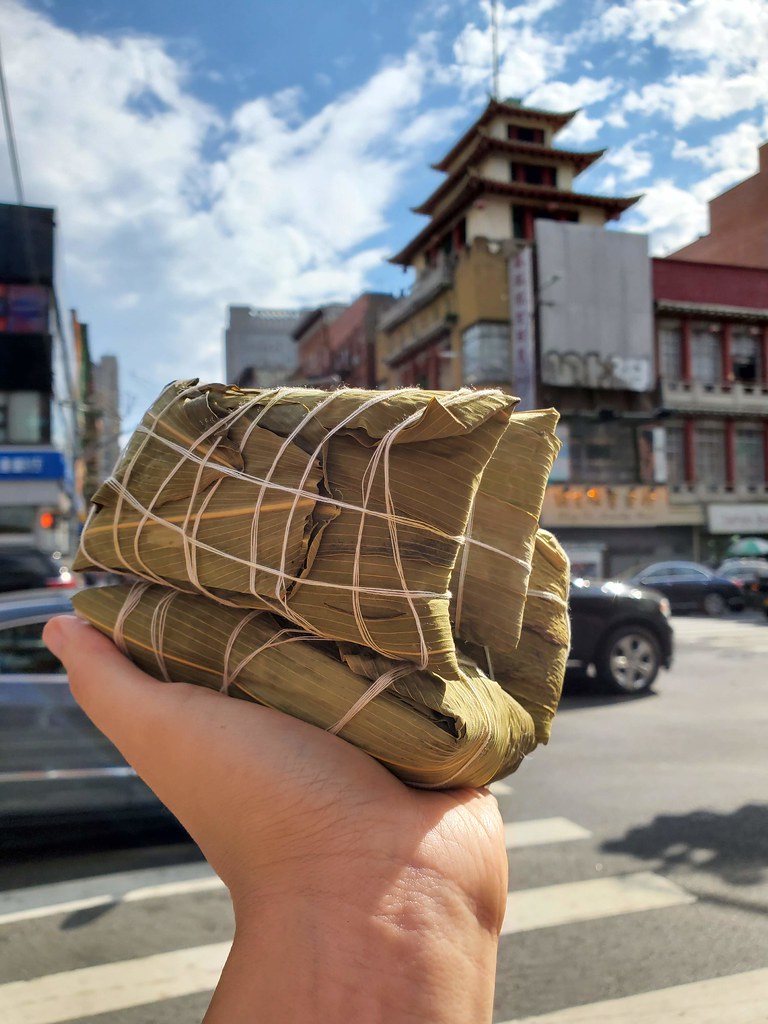Tuen Ng Festival (duan wu jie) 端午节
It's Cinco de Mayo, but with no alcohol and lots of glutinous rice. It is the fifth day of the fifth
month on the Lunar calendar, and you know what that means: eating zhong and watching dragon boat races. But because I am far away
from my family, I totally forgot about the holiday until my friend in Tanzania
was telling me about how he would like a zhong right
now. You can eat zhongs year round, but it is something quite particular to crave,
so I figured it must have been tuen ng jit.
So, now that I've
used the word multiple times, what is a zhong? Known as zong zi in Mandarin, zhongs are steamed glutinous
rice balls wrapped in bamboo leaf. My family is Cantonese, so I am used to
seeing them in tetrahedrals (yay organic chemistry), but apparently northerners
wrap their's in long cone shapes. So why is this food purposely eaten on this holiday?
Well, here's the story that I remember my mom telling me when I was a
kid.
Back in the Chu
Dynasty during the Warring States Period, China was in turmoil. Qu Yuan was a
high ranking official who served his people justly, but because the emperor ignored
his advice, this detrimentally affected the citizens of the kingdom. Out of
despair, Qu Yuan committed suicide by drowning himself in the river on the
fifth day of the fifth month. But because he was so popular among the local
people, they wanted to retrieve his body and provide him with a proper burial.
Therefore the men paddled out into the water, banging on drums and making noise
to scare away the fish. The women wrapped rice in bamboo leaves and dumped them
into the river, so that the fish would feed on the rice instead of Qu Yuan's
body. So there you have the origins of zhong, dragon boating, and the festival.
And that is the story
that I grew up listening to every fifth of the lunar fifth while eating a kan shui zhong (alkaline rice
dumpling) or a ham yuk zhong (salted pork rice).
There are many types out there, and everyone makes them differently. Generally speaking, kan shui zhong are glutinous
rice prepared with alkaline water filled with red bean paste. The alkaline
treatment causes the rice to turn a translucent brown color (Why? Maybe I'll
learn during the acid/bases orgo lecture). Because it does not have much taste,
I grew up learning to lightly dip it in raw sugar with each bite. I'm not a
huge fan of red bean, but I do enjoy the plain portions of kan shui zhong. Ham
yuk zhong are its savory
counterparts, which my friend Kevin succinctly summarizes: "meat is the best. With a drizz of soy sauce. The meat
has to be fatty so the oil goes into the rice. That's my evaluation of the whole
situation." My Chiu Chow grandmother wraps her own ham yuk zhongs, which
she generously stuffs with fatty pork, salty egg yolks, and peanuts. I
completely agree with Kevin, because I am just craving the taste of soy sauce
as I typed that. Though, my dad still grabs for the sugar. There are just some
childhood habits you can't break.
So whatever story you grew up hearing, or if this is your first time ever hearing of such a strange holiday, just make sure you get to eat some zhong tonight!


